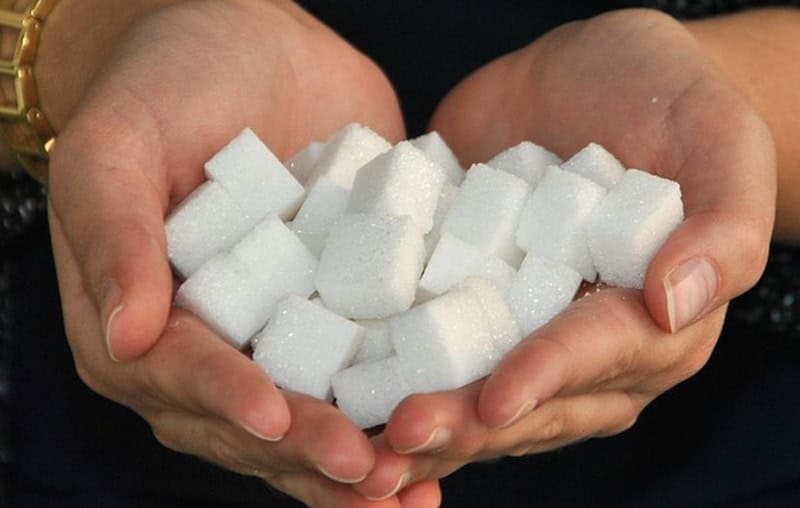Discover the Uses and Advantages of Beet Sugar Vs Cane Sugar in Your Daily Diet
Checking out the distinctive top qualities of beet and cane sugar discloses even more than simply their sweetening capacities; it highlights their special effect on wellness and cookeries. Beet sugar, recognized for its refined taste, is usually preferred in delicate treats, whereas cane sugar, with its hint of molasses, includes richness to durable dishes. Each type holds its own nutritional profile and glycemic ramifications, welcoming a deeper understanding of their functions in a balanced diet and lasting usage methods.
Origin and Production Procedures of Beet and Cane Sugar
The distinct climates and dirt types needed for expanding sugar beetroots and sugarcane add to differences in their growing techniques and geographical distribution, influencing the economics and sustainability of their manufacturing. beet sugar vs cane sugar.
Nutritional Comparison Between Beet Sugar and Cane Sugar
Despite originating from various plants, beet sugar and cane sugar are nutritionally very similar, both primarily containing sucrose. Each gives about 4 calories per gram, converting to roughly 16 calories per tsp. Structurally, both sugars are composed of about 99.95% sucrose, with minimal quantities of various other compounds like moisture and trace element, which do not significantly alter their dietary accounts.

Eventually, when choosing in between beet sugar and cane sugar based upon nutritional content alone, both offer similar advantages and downsides as they are essentially forms of the exact same molecule-- sucrose, supplying fast power without various other nutrients.
Influence On Health: Glycemic Index and Caloric Content
Checking out even more into the results of beet sugar and cane sugar on wellness, it is vital to consider Resources their glycemic index and calorie web content. The glycemic index (GI) of both beet and cane sugar is around 65, classifying them as high-GI foods, which can cause fast spikes in blood sugar levels.
Each sort of sugar contains around 4 calories per gram, making their calorie content matching. For those monitoring caloric intake, specifically when taking care of weight or metabolic wellness problems, comprehending this equivalence is vital (beet sugar vs cane sugar). Too much consumption of any type of high-calorie, high-GI food can contribute to health and wellness issues such as weight problems, heart condition, and insulin resistance.
Environmental and Economic Factors To Consider of Sugar Manufacturing
Beyond health and wellness impacts, the manufacturing of beet and cane sugar also raises considerable ecological and financial concerns. Sugar beet farming tends to need cooler climates and has a reduced geographical impact compared to sugar cane, which prospers in exotic areas. However, both plants are extensive in terms of water use and land profession, potentially leading to logging and water deficiency. Financially, the global sugar market is very unstable, affected by changes in global trade policies and aids. Many countries incentivize sugar production via economic support, skewing market value and influencing small farmers negatively.
In addition, click for more the use of chemicals and fertilizers in both beet and cane sugar farming can lead to dirt deterioration and air pollution, further influencing biodiversity and local water bodies (beet sugar vs cane sugar). The option in between cultivating sugar beet or cane usually depends upon regional environmental conditions and economic variables, making the sustainability of sugar manufacturing a complicated problem
Culinary Applications and Flavor Distinctions
While the environmental and financial elements of sugar production are indeed considerable, the choice go to my site between beet and cane sugar also affects cooking applications and taste accounts. Beet sugar, acquired from the sugar beet plant, is known for its incredibly neutral preference.
Cane sugar, drawn out from sugarcane, frequently maintains molasses traces, which pass on a distinct richness and depth. The slight variation in dampness material between beet and cane sugar can influence the texture and uniformity of recipes, making cane sugar a preferred selection for specific recipes that benefit from its special homes.

Final Thought
To conclude, both beet and cane sugar have distinctive beginnings and production processes, using comparable nutritional profiles with small differences in salt web content and taste. While their influence on wellness, specifically concerning glycemic index and calories, is similar, the option between them frequently comes down to environmental, economic elements, and particular culinary needs. Understanding these aspects can direct consumers in making educated choices that line up with their health and wellness objectives and taste choices.